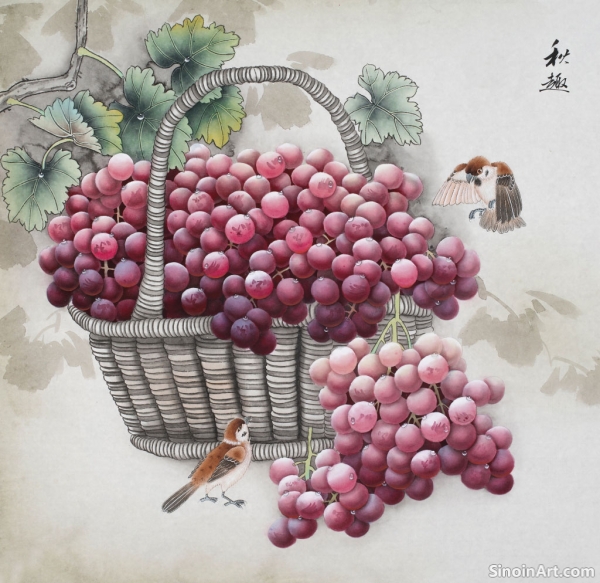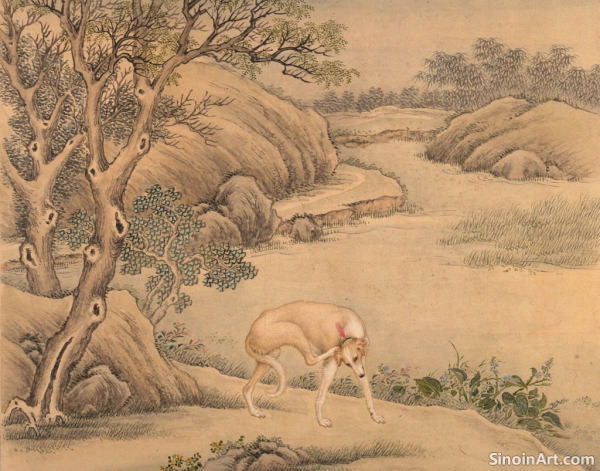Gongbi Painting in Modern Times: A Contemporary Renaissance
|
While deeply rooted in ancient tradition, Gongbi painting is not a static art form. In the modern era, it has experienced a remarkable renaissance, with contemporary artists pushing its boundaries and exploring new themes while remaining true to the core principles of meticulous detail and precision. This revival reflects a growing appreciation for traditional art forms, alongside a desire to innovate and reinterpret them for the modern world.  One of the most significant developments in contemporary Gongbi painting is the incorporation of modern themes and subjects. While traditional Gongbi often focused on flowers, birds, and court figures, contemporary artists are now exploring human figures, urban landscapes, abstract concepts, and social issues. This expansion of subject matter has broadened the scope of Gongbi painting, making it relevant and accessible to contemporary audiences.  Contemporary artists are also experimenting with new techniques and materials in Gongbi painting. While traditional materials like silk, xuan paper, mineral pigments, and ink remain essential, artists are now incorporating acrylics, inks, and mixed-media elements, creating hybrid forms that blend traditional practice with contemporary approaches. This innovation has allowed for greater diversity and creative expression within the style.  The integration of digital technology is also playing an increasingly important role in the evolution of Gongbi painting. Some artists use digital tools to create initial sketches or to enhance the detailing process, while others are incorporating digital media into their finished artworks. These new technological approaches present both challenges and opportunities for the traditional practice of Gongbi painting, showcasing the art's adaptability. The globalization of art has also had a significant impact on Gongbi painting. As the art form gains popularity internationally, artists from diverse cultural backgrounds are now embracing it, bringing their unique perspectives and influences to the tradition. This cross-cultural pollination is enriching the artistic vocabulary of Gongbi, contributing to its ongoing development. Ultimately, the contemporary renaissance of Gongbi painting is a testament to its enduring appeal and versatility. By blending tradition with innovation, artists are ensuring that this ancient art form continues to thrive and evolve, remaining a vital and vibrant part of the global art landscape. The continued study and application of traditional art forms in a contemporary way demonstrates the power of art as a living and breathing entity. |
Tag : Contemporary Gongbi Painting, Modern Chinese Art, Gongbi Art Revival, Digital Gongbi, Innovative Art Techniques
Related information
- Gongbi and Personal Expression: The Artist's Voice
- Gongbi and the Use of Bird Motifs: Symbolism and Beauty
- Gongbi and the Use of Calligraphy in Composition
- Gongbi Painting and the Art of Storytelling
- The Role of the Artist's Seal in Gongbi Painting
This article focuses on Gongbi painting as a vehicle for personal expression, highlighting how artists use choices in subject matter, color, composition, and overall tone to convey their unique perspectives and artistic visions within the traditional art form.
The depiction of birds is a prominent theme in Chinese Gongbi painting, often serving as a means to explore the beauty, freedom, and symbolic richness of the natural world. Artists often render a diverse array of birds, from majestic eagles and phoenixes to the more humble songbirds, imbuing them with specific cultural meanings and stylistic characteristics. The birds add a vibrant and often symbolic element to these pieces.
This article explores the integration of calligraphy into Gongbi painting, highlighting how it balances the composition, adds context, provides literary depth, and enhances the overall aesthetic and cultural significance of the artwork.
This article explores the use of Gongbi painting as a medium for storytelling, highlighting the use of detailed scenes, character portrayal, symbolism, settings, and how these elements bring narratives from history, mythology, literature, and everyday life to visual form.
This article discusses the role of the artist's seal in Gongbi painting, highlighting its function as a signature, a visual element, a statement of ownership, and its contribution to the cultural significance and authenticity of the artwork.